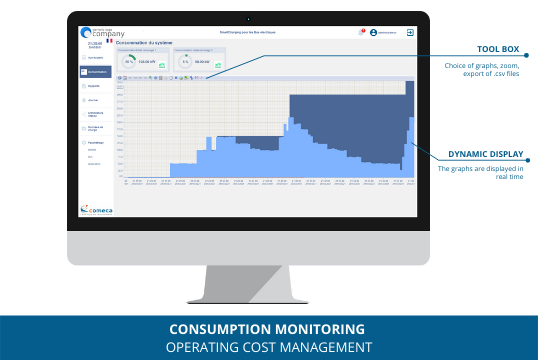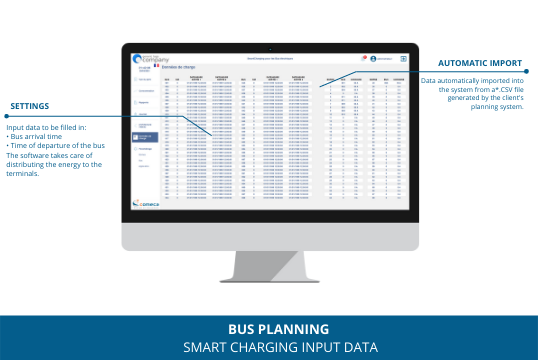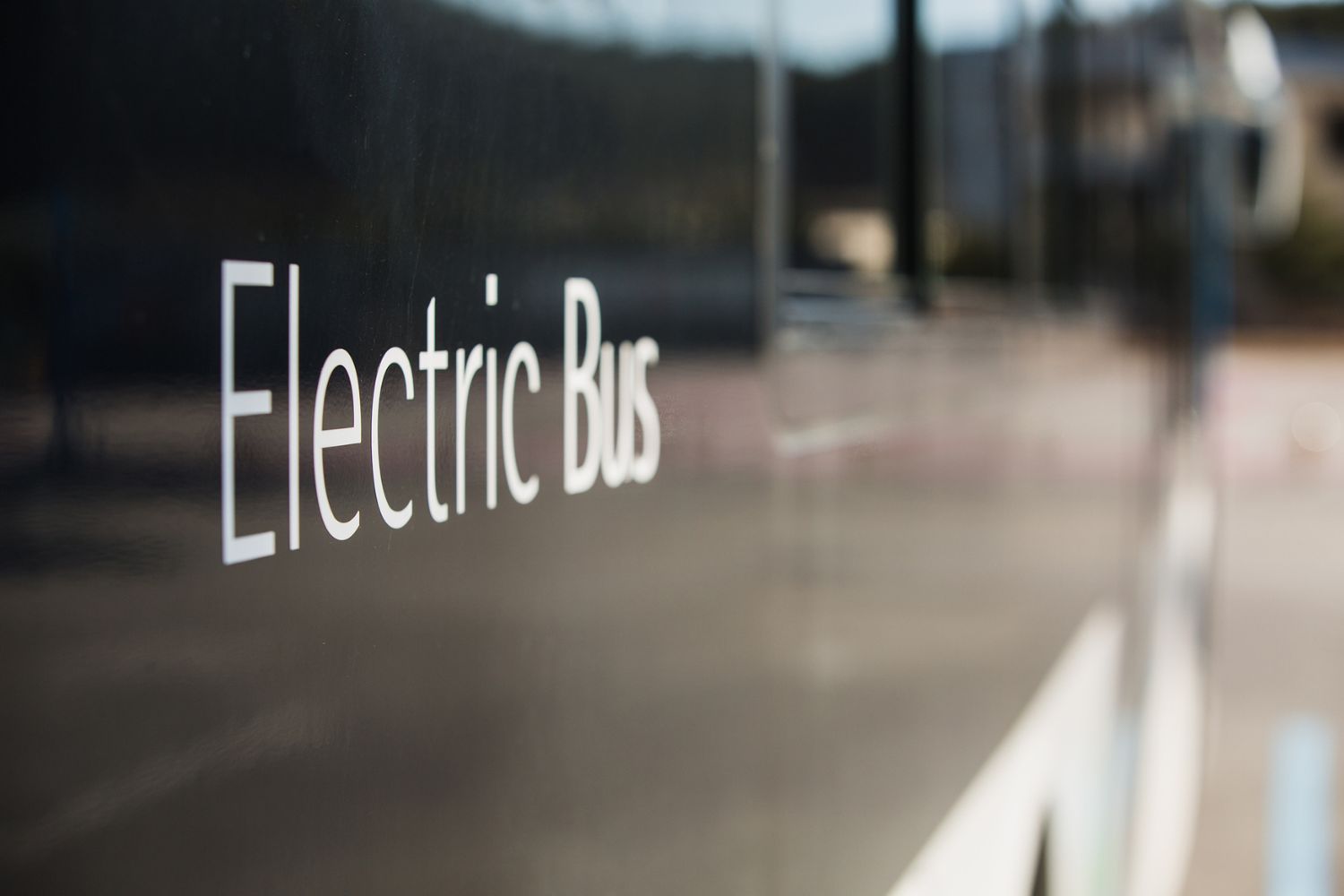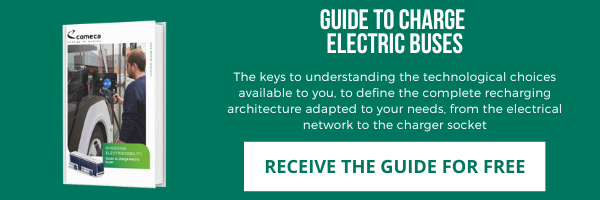The benefits of smart charging for electric buses
When switching to electric power, the operator is faced with the challenge of guaranteeing the availability of the buses while reducing the costs associated with energy consumption when they are charged at the depot, which in some cases can exceed 250 vehicles. This is where the intelligence of the infrastructure comes into play through the use of Smart Charging software.
The decision to switch to electric power brings to light several issues: the size and equipment of depots, the distribution of electric power, the management of recharging times and vehicle down time, and the management of the range and mileage covered by each vehicle.
How does smart charging work?
Smart Charging distributes the power and charging time of each bus in a coordinated way to ensure availability and charging for its next journey. It optimises the total power consumed by the charging installation.
In this way, this solution helps to smooth out the power consumed or to manage the reduction in power consumption during a given period. Smart Charging adapts the electrical consumption of the depot according to the tariff reductions of the different electrical energy suppliers and the availability needs of the vehicles. As a result, Smart Charging helps to optimise the cost of charging electric vehicles.
What are the benefits at the time of installation?
Reduction of CAPEX
Opting for Smart Charging from the beginning of the project is an asset to moderate the expenses related to material investments (CAPEX) and to make savings.
Indeed, as the charging is intelligent, the power requirement at the point of delivery to the electrical network is lower. During installation, the size of the MV substation, the MV-LV transformer and the LV switchboard is reduced, which lowers the investment cost.
This reduction in size also impacts the size of the power cables in the electrical infrastructure, which results in lower material costs such as copper or aluminium.
How can this gain be assessed at the time of the study?
The evaluation is based on the planning of operations. The study of each route to be carried out determines the need and allows the operator to select the type and brand(s) of bus. The energy requirement for recharging the batteries is calculated on this basis, which enables the matching with the operational schedule.
The duration of each bus' stay at the depot and its next trip is now known, it is then possible to draw a current vs time graph of the depot's energy requirement.
Without smart-charging:
The full charge of the bus is triggered when the bus is connected to the terminal, several buses entering the depot at the same time will inevitably cause a peak in consumption.
=> The electrical installation is designed to support this peak but will be oversized the rest of the time.
With smart-charging:
The start of full charging of some buses can be delayed to limit this consumption peak. By staggering the recharging and metering the recharging, the consumption is smoothed out and the peak consumption is greatly reduced.
=> The electrical infrastructure is proportional to the need.

What are the operational benefits?
Load management and vehicle availability
Smart Charging is linked to operational planning to intelligently distribute charging power according to scheduling and operational priorities to ensure that each bus is fully operational for its next journey.

Integration of operators' usual tools
Smart Charging does not disrupt the habits of operators, who still use their usual planning tool. In case of unforeseen circumstances, a charging point can be managed manually, and the other charging points are then automatically given an adaptation instruction, if necessary.
Optimisation of operating costs
The Smart Charging system generates operating balances to optimise energy consumption and facilitates the search for contracts with the best rate in relation to the depot's consumption signature.
Seasonal preconditioning of vehicles
Smart Charging can control the preconditioning of each bus according to its departure time from the depot and the season. As the bus is connected to the system, it is easy to switch on the heating or cooling of the passenger compartment before the driver starts his journey. This way, the batteries are not required to adapt the ambient temperature, which increases the vehicle's autonomy while ensuring a pleasant temperature. All this from the very beginning of the journey for the driver as well as for the first users.


